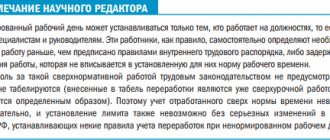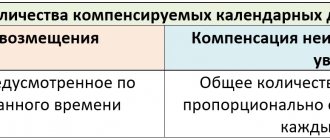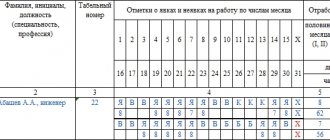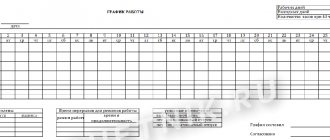Maximum and minimum PRV
The length of the working day according to the Labor Code 2020 is limited only by the upper limit. It cannot exceed 40 hours per week. This is clearly stated in Article 91 of the Labor Code of the Russian Federation.
For certain categories of workers, Article 92 of the Labor Code establishes a reduced time limit (per week):
- for teenagers under 16 years old - up to 24 hours;
- for school and college students - similarly;
- for boys 16-18 years old - up to 35 hours;
- for disabled people of groups I and II - the same amount;
- for those who work in harmful conditions of degree 3 or 4, as well as dangerous ones - 36 hours.
According to the mentioned 91st article, the relevant federal executive body establishes the procedure for determining the norm of working time for a month, quarter or year.
Separate regulations may establish other indicators for certain categories of citizens or representatives of certain professions.
There are no legal requirements for minimum hours worked.
Rules for irregular work
The Labor Code in Article 101 defines an irregular working day as a special regime established for individual employees when the employer has the right to involve them in work functions outside the normal working hours. However, such processing should be episodic.
The nature of work involving irregular working hours is necessarily fixed by the employer’s regulations, collective and labor agreements. The employer has the right to engage an employee to work outside the established working hours only to perform the functions established by the employment contract.
If an employee is hired to work with an established schedule on a part-time basis, then non-standardization cannot be applied to him.
As compensation, citizens who have irregular working hours are provided with additional paid leave every year. Overtime hours are not taken into account and are not paid for. However, the employer does not have the right to demand that work be carried out on days that are scheduled days off for the employee.
What is the possible length of a working day?
An employment contract usually specifies how long a specific employee must work. According to Article 93 of the Labor Code of the Russian Federation, it can be issued for part-time work (a week or a day).
The employer is obliged to provide such conditions if the employee is:
- a pregnant woman;
- parent or guardian of a child under 14 years of age;
- parent or guardian of a disabled minor;
- a relative of a patient in need of care according to a medical certificate.
Such measures are introduced to protect public health. Therefore, the schedule will not affect the citizen’s labor rights, in particular, the length of vacation and length of service.
The average working day, the formula of which takes into account the actual man-hours worked, is an indicator of economic efficiency. It is calculated as the ratio of the total number of man-hours worked to the number of days in the period under review.
The manager uses it for:
- planning the working time fund;
- assessment of production output and labor intensity;
- analysis of personnel policy.
Employees do not encounter this indicator in practice.
Working hours
The work schedule (Article 100 of the Labor Code of the Russian Federation) is established by the regulations of the organization as a whole for all employees. An individual approach may be taken for individual employees.
The general concept of a work regime implies a reasonable combination of periods of work and rest within a calendar period. This:
- 5 working days and 2 days off per week;
- 6 working days and 1 day off per week;
- special work modes (with part-time work, irregular working hours, flexible hours, dividing work time into parts);
- Shift work on a rotating schedule.
Parameters that determine working hours:
- duration of work per week (in hours);
- time period allotted for a day or shift;
- daily work start and finish schedule;
- establishing periods allotted for rest and eating;
- other parameters depending on the specifics of the organization.
Results
The weekly working hours should not exceed the maximum of 40 hours determined by the legislator.
It is on the basis of this indicator that the standard working time is established for all available labor modes. Performing labor beyond the norm is subject to separate regulation by law. You can find more complete information on the topic in ConsultantPlus. Free trial access to the system for 2 days.
Business trips with summarized accounting
If the employee was on a business trip during the reporting period, his working hours must be reduced.
According to standard rules, the rate is reduced when an employee is absent from work, for example during illness or vacation. However, during a business trip, the employee still performs his duties, although he is not at his permanent place of work. According to the Ministry of Labor, the norm still needs to be reduced, since in fact the employee is absent from the workplace.
At the same time, business trip time does not need to be taken into account when calculating actual time worked to compare it with the norm. This is explained by the fact that during the business trip the employee retains his average earnings, but is not paid a salary.
Keep track of working hours in Kontur.Accounting. You can also pay salaries, calculate taxes, do accounting, and submit reports via the Internet.
Summarized accounting for overtime work
Enterprises introduce summary accounting most often when they cannot offer employees an 8-hour working day without overtime. For example, a pizza delivery driver may work 12-14 hours a day. Then the company organizes shift work to compensate for overtime on some days with rest on other days. But even with this regime, employees sometimes work overtime. Then they receive an additional payment for overtime, which is calculated based on the results of the accounting period.
Calculate processing based on the results of the established accounting period. It may turn out that on the day before the holiday an employee worked an hour more than others, but based on the results of the entire accounting period, his hours worked fit into the norm. In this case, there will be no overtime. This is the main feature of summarized accounting.
The first two hours of overtime must be paid at least one and a half times the rate, and further hours of overtime - at least double (Article 152 of the Labor Code of the Russian Federation). These are guarantees of the Labor Code of the Russian Federation, but the organization can offer greater remuneration for overtime work. Instead of payments, the employee can be offered vacation for the number of hours or days that he worked.
The Labor Code does not clearly indicate how to calculate overtime for overtime. If overtime was, for example, 10 hours per month, we recommend paying the first two hours at a rate of 1.5, and the remaining 8 hours at a rate of 2. Some employers prefer to split overtime hours by shift and use a rate of 1.5 for more hours. Courts, as a rule, do not agree with this.
If a working day coincides with a holiday, and this occurs in accordance with the established working hours, then this day is paid in the usual way. If work on a holiday was not included in the standard working hours according to the schedule and is overtime, then the payment for this day should be at least twice as much as on a regular day (Article 153 of the Labor Code of the Russian Federation). At the request of the employee, instead of monetary compensation, he can take another day of rest.
There are restrictions on overtime work: for example, you cannot exceed 4 hours of overtime in two working days in a row, and the annual overtime limit is 120 hours (Article 99 of the Labor Code of the Russian Federation).
Example of overtime payment
The enterprise has established a summarized recording of working time and a fixed wage rate of 200 rubles per hour. The employee worked 160 hours during May 2021, of which 8 hours were overtime. The company follows the Labor Code of the Russian Federation and pays for the first two hours of processing at one and a half times the rate, and for subsequent hours at double rate. At a fixed rate, we will calculate payment for hours worked according to the standard:
(160 –
× 200 = 30,400 rubles
The first two hours of processing: 2 × 200 × 1.5 = 600 rubles.
Subsequent processing hours: (8 – 2) × 200 × 2 = 2,400 rubles.
In total, the employee will receive payment: 30,400 + 600 + 2,400 = 33,400 rubles.
Working time as a legal category
The fundamental legal norm establishing the ratio of time spent on work and rest is Art. 37 of the Constitution of the Russian Federation, indicating that the employee, as a participant in labor relations, is guaranteed the maximum designated amount of time that he can use for work. It is regulated at the level of federal legislation and is limited by the legal provisions of the Labor Code of the Russian Federation.
Art. 91 of the Labor Code defines the legal category “working time”. This is the time that an employee must use to perform a labor function, and the duration of this time, the start and end times are established by the employment contract. The Code, federal and industry regulations qualify the process of actual labor and “other” periods of time as working time. The category of other time intervals includes so-called regulated breaks:
- breaks related to the organization and technology of the labor process: for heating and rest according to Art. 109 of the Labor Code of the Russian Federation when performing a labor function not indoors or in an unheated room, for rest of air traffic controllers according to clause 11 of the regulations of the Ministry of Transport regulating the work of air traffic control (approved by order of the Ministry of Transport dated January 30, 2004 No. 10), for car drivers according to paragraphs. 15, 19 of the regulations of the Ministry of Transport regulating the work of car drivers (approved by order of the Ministry of Transport dated August 20, 2004 No. 15), etc.
- additional breaks for feeding children for working women when children are under 1.5 years of age under Art. 258 Labor Code of the Russian Federation.
The listed breaks are part of the working time and are subject to payment.
Nuances
Any of the working hours used must reasonably combine periods of work and rest, which will not only preserve the efficiency of employees during the shift, but also ultimately increase their productivity. Of course, each of them has its own nuances. Therefore, it is established depending on the characteristics of a particular organization and on the basis of local regulations.
Important conditions are compliance with labor laws and preventing violations of workers' rights.
Remuneration under summarized accounting
With summary accounting, the organization pays for the work as it considers appropriate. You can set hourly rates or enter official salaries. The amounts of payments are prescribed in the collective agreement or the Regulations on remuneration. The salary is attached to the standard time that the employee must work during the accounting period. In this case, overtime will mean an increase in wages.
When a person has worked all his days according to schedule for a month, he receives his salary and there are no shortcomings. At the end of the accounting period, look only at processing - pay for it at an increased rate.
The fixed tariff rate is very convenient for cumulative accounting. In this case, salary calculation is done using a simple formula: Hours worked × Tariff rate.
Example of using a fixed rate
The company has introduced summarized recording of working hours, the accounting period is a month. An employee works at an hourly rate of 200 rubles. He works on a shift schedule of 14 hours, 2 days every other. During the month, he worked 14 shifts, a total of 196 hours. The monthly salary will be 196 × 200 = 39,200 rubles.
Night work
If an employee’s shift occurs at night, the employer must reduce it by one hour without the need to work off. According to the law, today night time is considered to be the time period from 22:00 to 6:00. Hours worked during this period must be paid at an increased rate.
However, in cases where a reduced length of time is introduced for an employee, a reduction in the night shift is not provided. A similar rule also applies to employees for whom there are no other working hours.
The length of the working day at night can also be compared with the duration of the working day during the day; it is also allowed for shift work and in case of production necessity.
However, it is worth noting that night work is not permitted for all groups of people. In particular, the following are not allowed:
- Pregnant women.
- Persons with disabilities.
- A person under 18 years of age (with the exception of cases when a minor is involved in working on a work of art).
In some cases, the following may be involved in night work:
- Women raising three or more children.
- Employees raising children under five years of age on their own, without the help of a spouse.
- Guardians of children under five years of age.
- Employees caring for a sick family member (moreover, the latter’s health status must be officially confirmed by a medical certificate).
However, in these cases, consent to work at night must be in writing. The employee has the right to be notified of the specifics of the work and can terminate the contract if the need arises.
Features of the work schedule at night in cases when it comes to concerts, theater organizations, and the media are negotiated separately in accordance with regulatory agreements, commissions for regulating business relations, as well as collective agreements.








